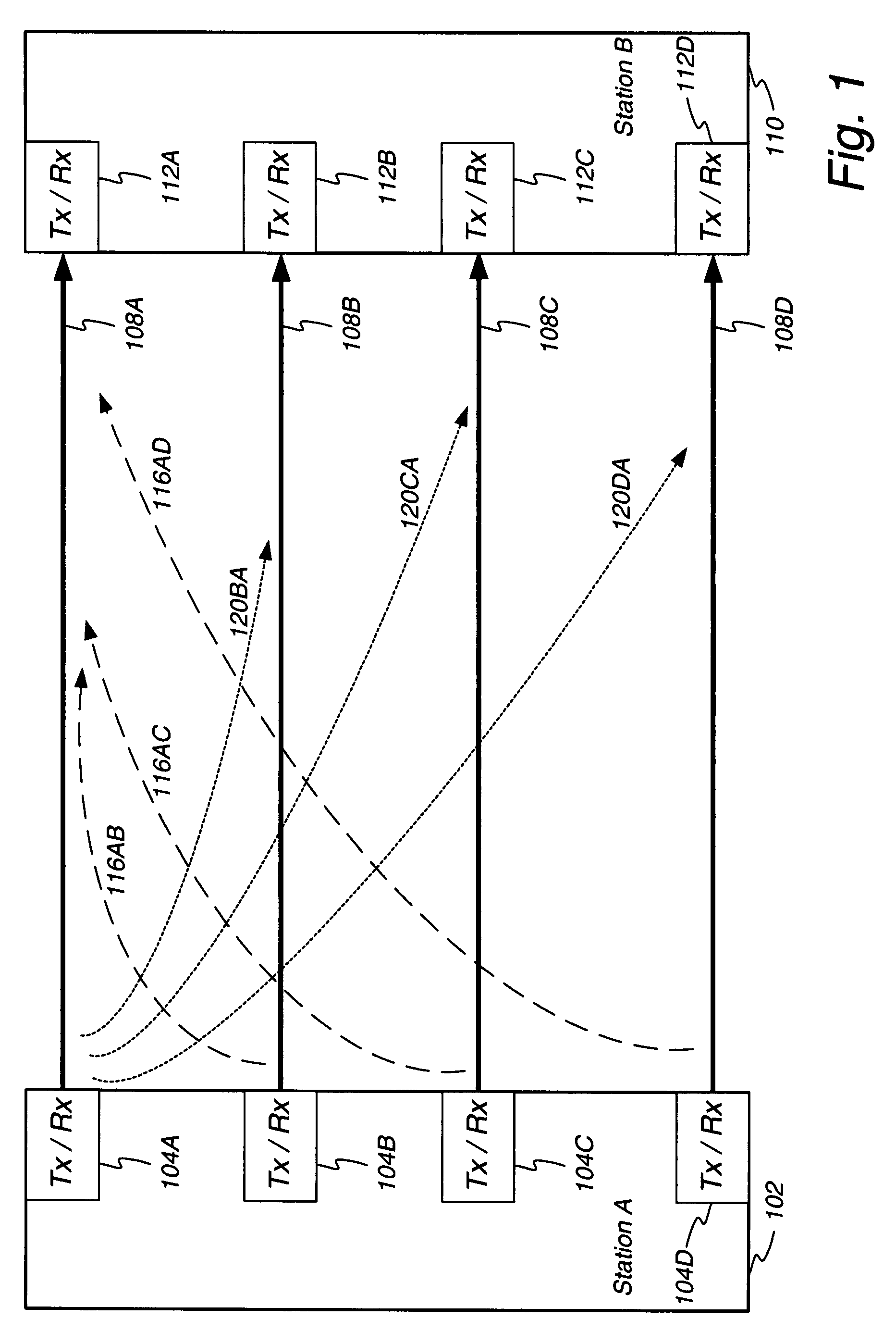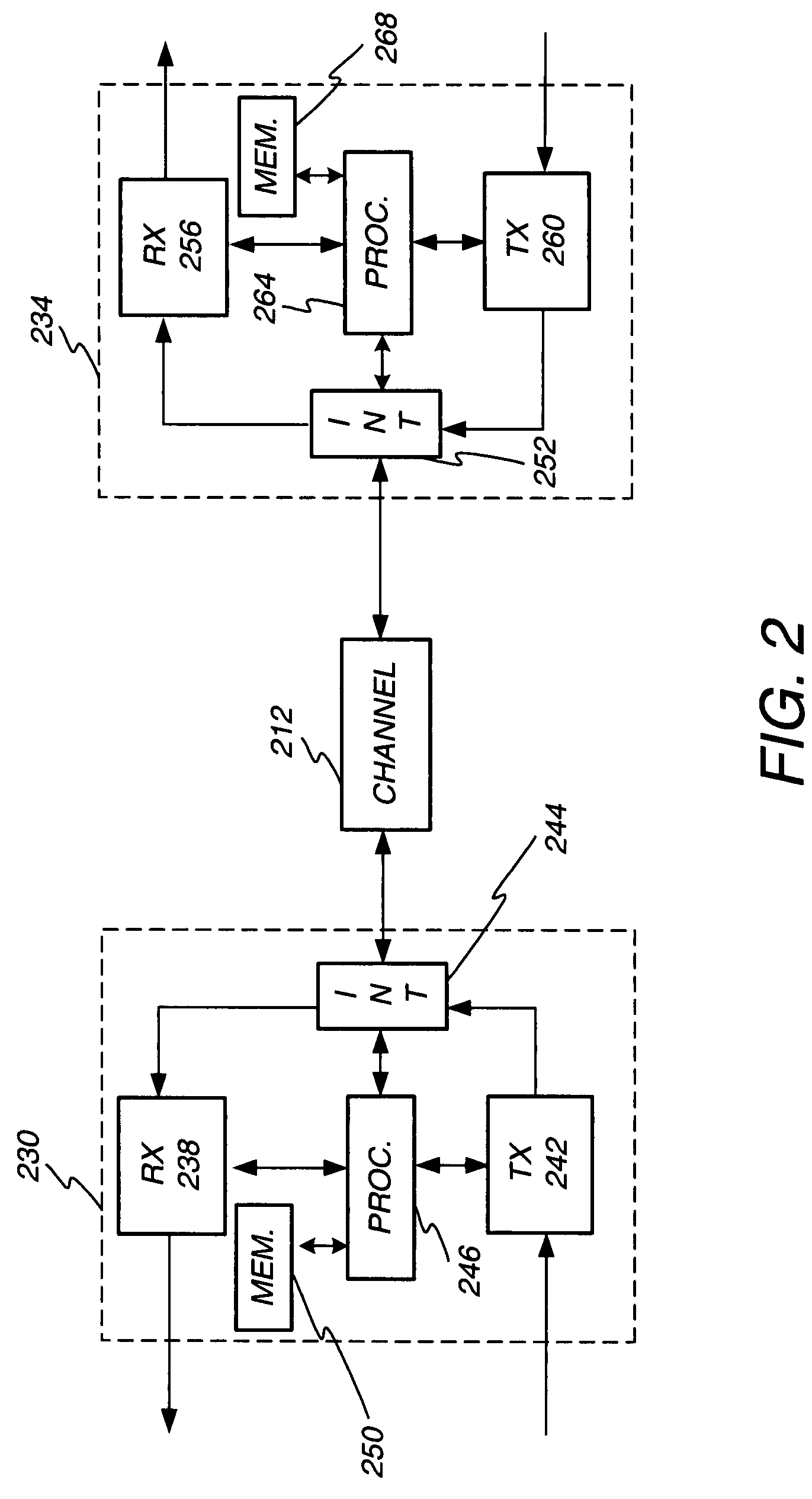Crosstalk cancellation using sliding filters
a technology of sliding filters and crosstalk, applied in the field of communication systems, can solve the problems of affecting the reception of the desired signal being transmitted on the victim channel, introducing interference into the other channels, and affecting the processing and decoding of the received signals transmitted over channels, etc., to achieve the effect of maximizing the crosstalk cancellation associated
- Summary
- Abstract
- Description
- Claims
- Application Information
AI Technical Summary
Benefits of technology
Problems solved by technology
Method used
Image
Examples
Embodiment Construction
[0034]In reference to FIG. 2, a block diagram of a receiver / transmitter pair is shown. A channel 212 connects a first transceiver 230 to a second transceiver 234. The first transceiver 230 connects to the channel 212 via an interface 244. The interface 244 is configured to isolate the incoming and outgoing signals. The channel 212 may comprise more than one conductor, and hence the interface 244 may perform isolation for each channel based on direction of data flow. The receive module 238 and transmit module 242 may comprise any assembly of hardware, software, or both configured to operate in accordance with the principles described herein.
[0035]The receive module 238 and transmit module 242 communicate with a processor 246. The processor 246 may include or communicate with a memory 250. The processor operates as described below in more detail and as would be understood by one of ordinary skill in the art. The memory 250 may comprise one or more of the following types of memory: RAM...
PUM
 Login to View More
Login to View More Abstract
Description
Claims
Application Information
 Login to View More
Login to View More - R&D
- Intellectual Property
- Life Sciences
- Materials
- Tech Scout
- Unparalleled Data Quality
- Higher Quality Content
- 60% Fewer Hallucinations
Browse by: Latest US Patents, China's latest patents, Technical Efficacy Thesaurus, Application Domain, Technology Topic, Popular Technical Reports.
© 2025 PatSnap. All rights reserved.Legal|Privacy policy|Modern Slavery Act Transparency Statement|Sitemap|About US| Contact US: help@patsnap.com



